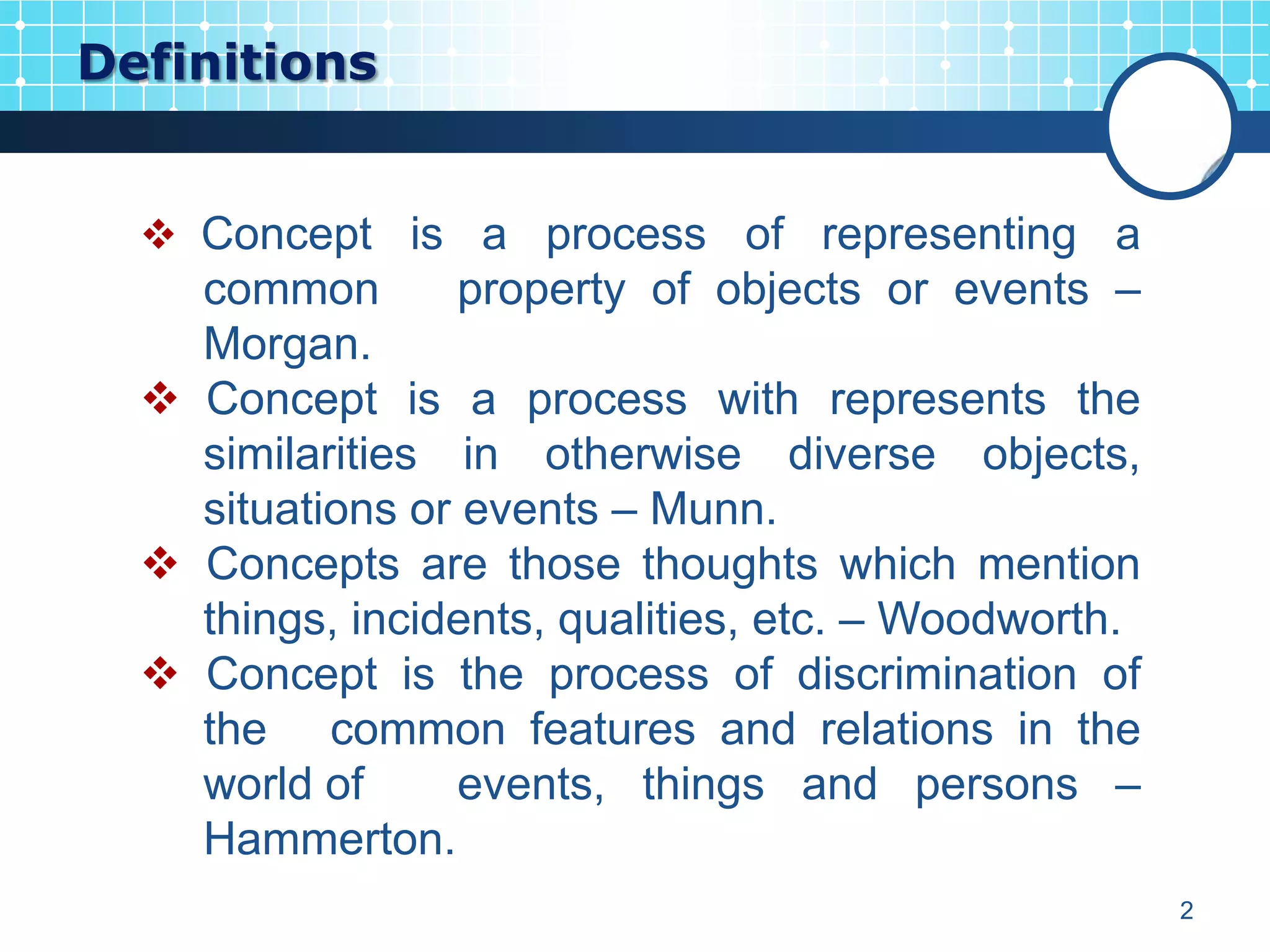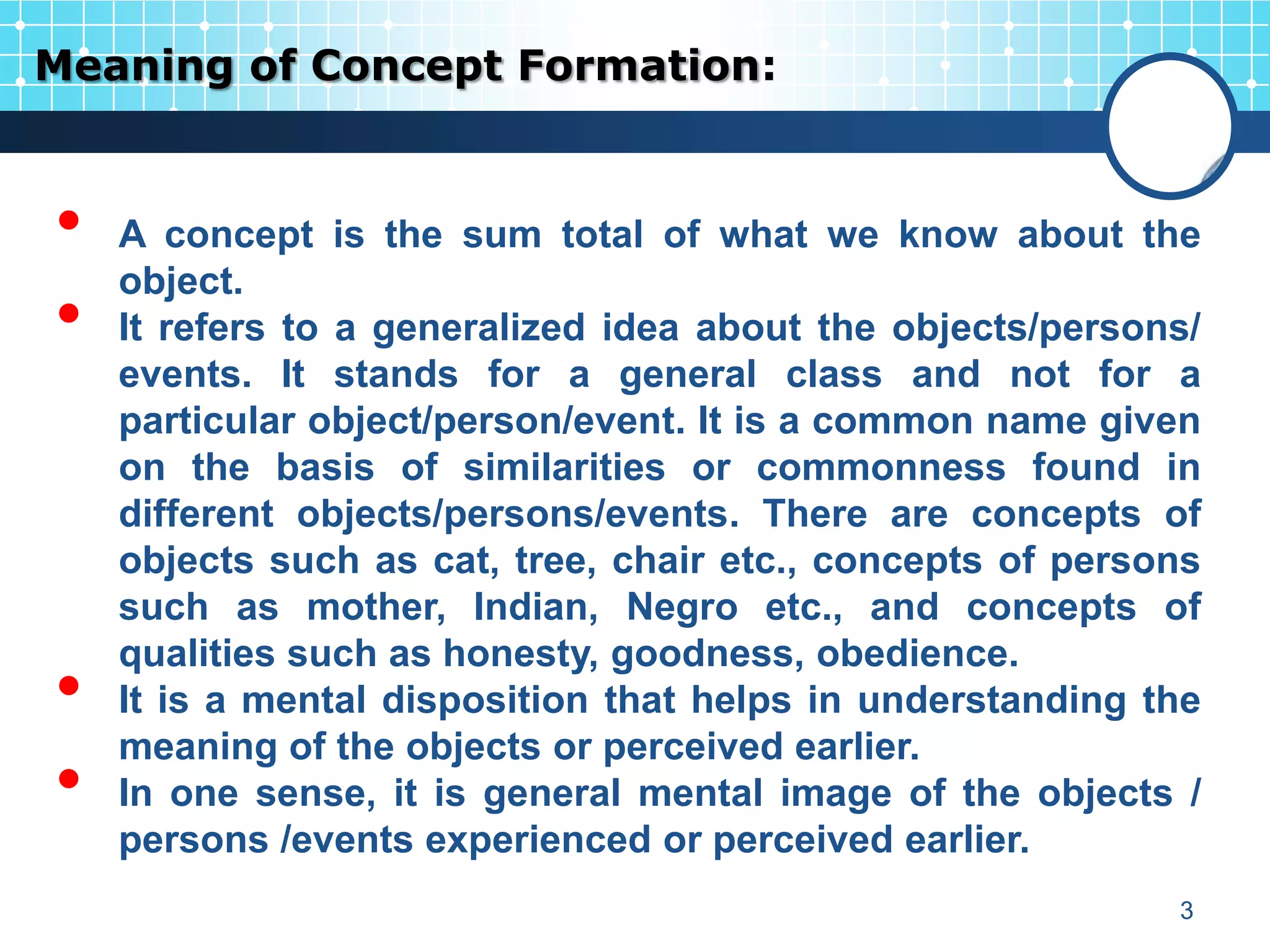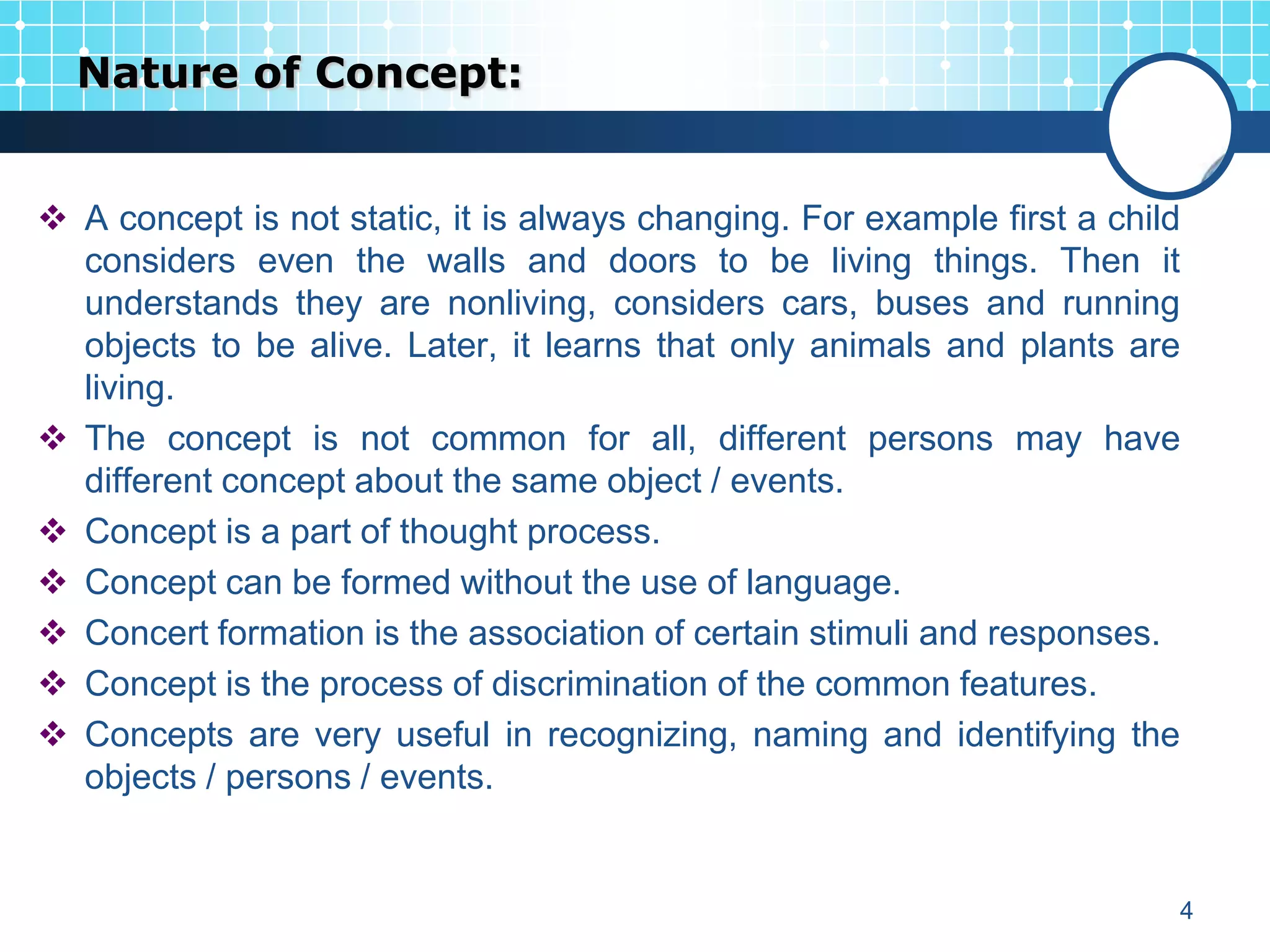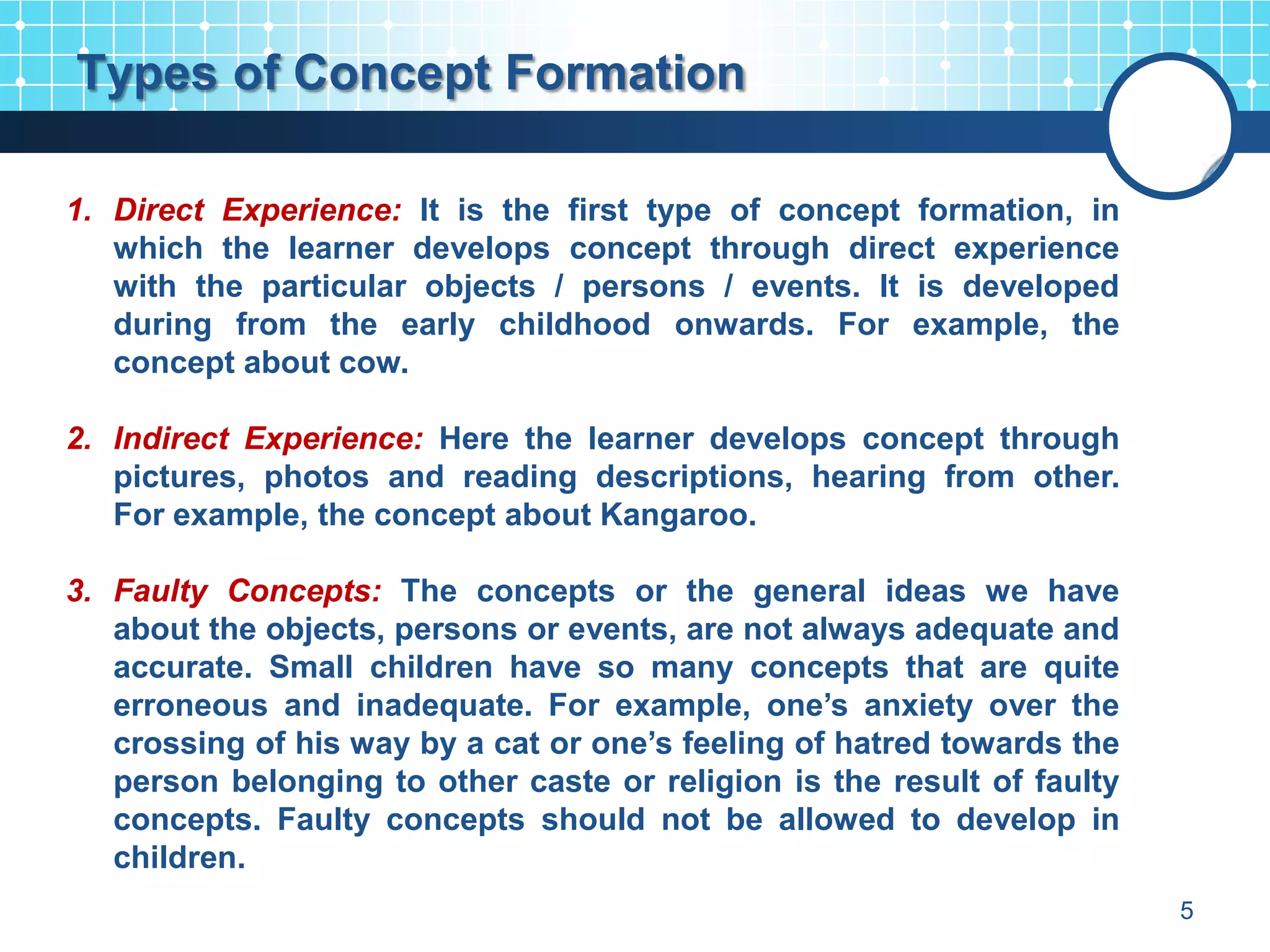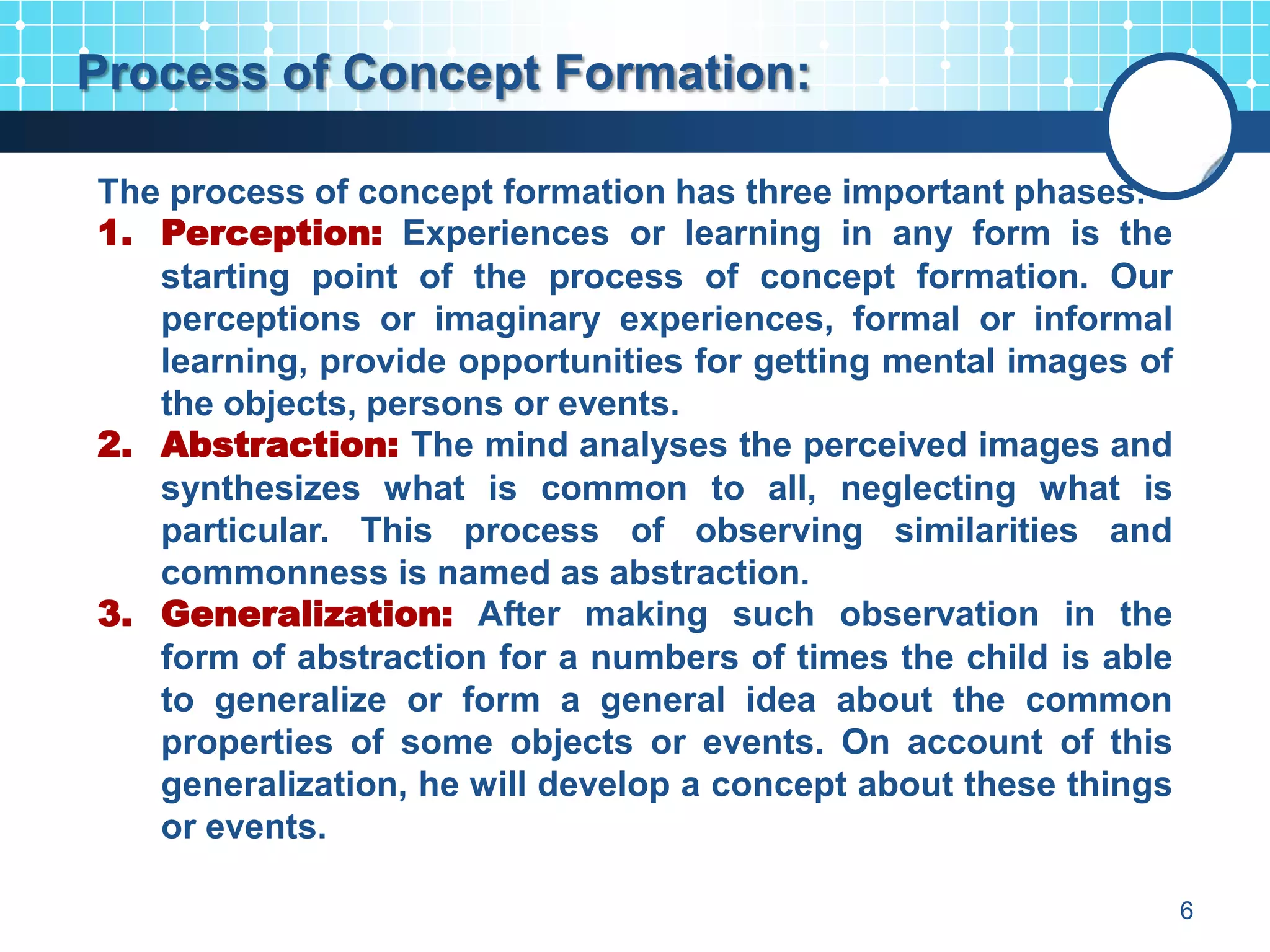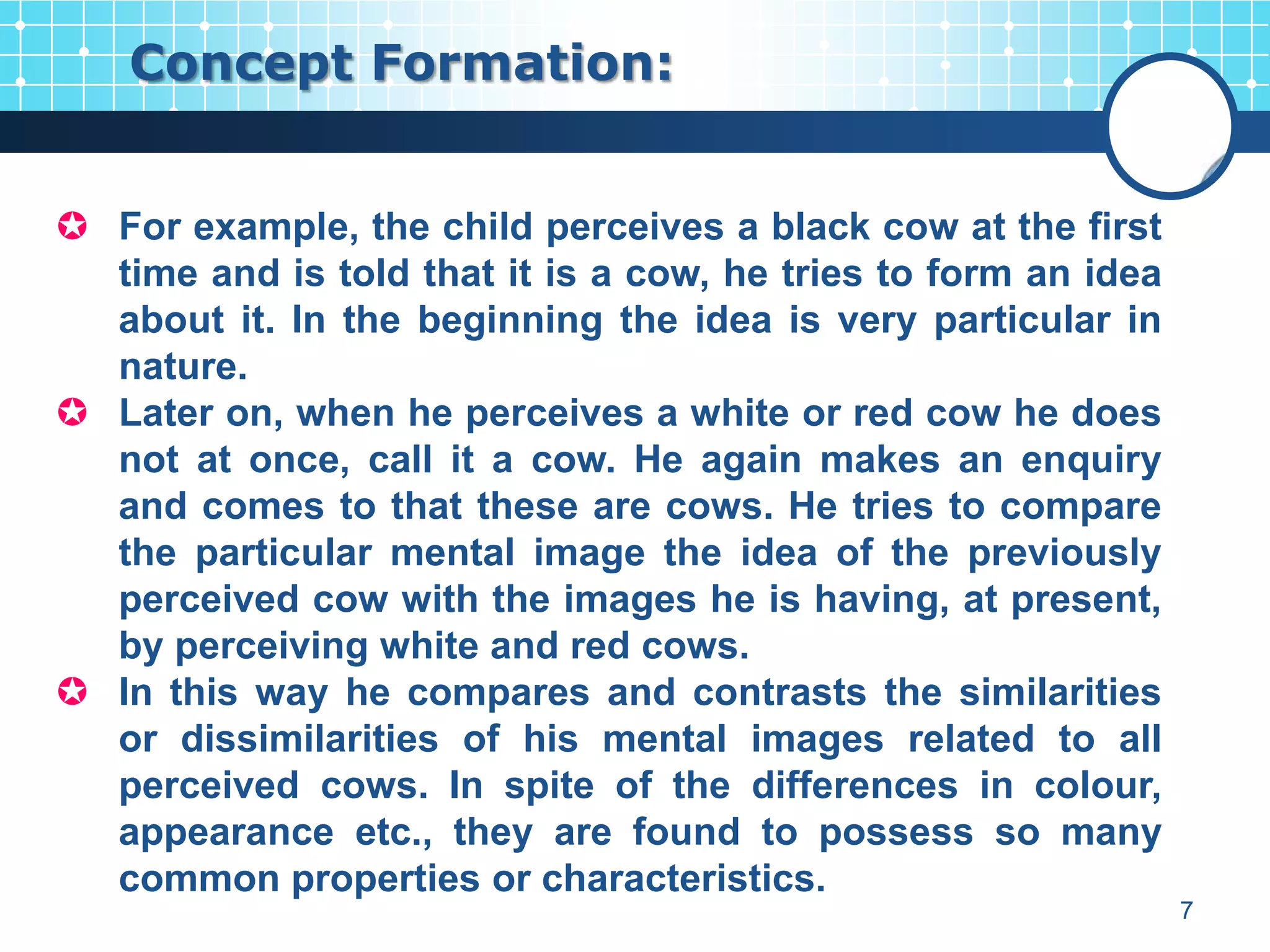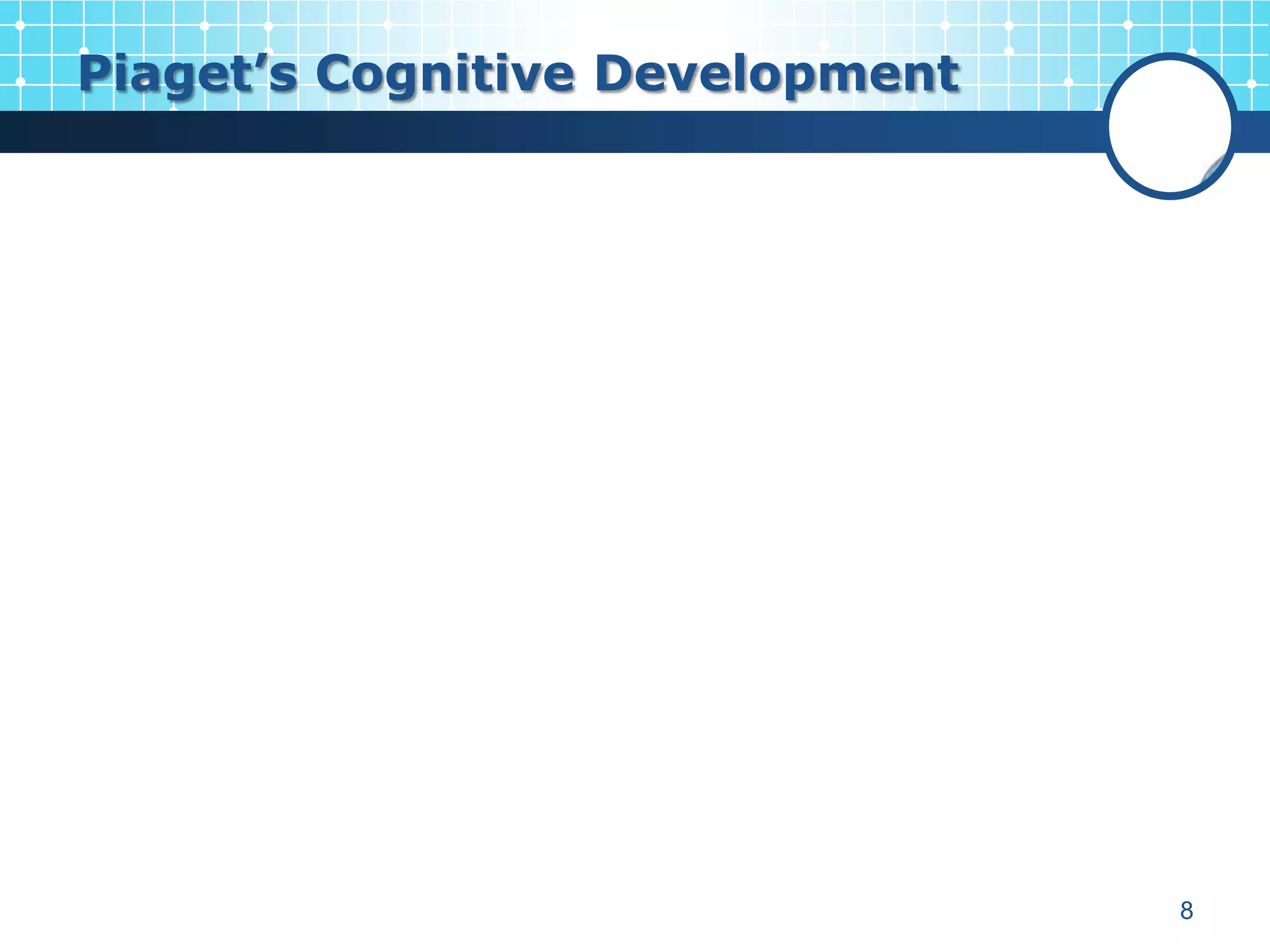This document discusses concepts and concept formation. It defines concepts as general mental representations that capture common properties of objects, events, or people. Concept formation involves 3 steps: perception of examples, abstraction of common features, and generalization into a concept. Concepts are not static and can change as a person learns. They are formed through both direct experience and indirect means like pictures. The document also discusses Piaget's stages of cognitive development and how concepts develop through those stages.

